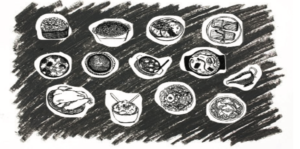Since Republican agenda has dominated Washington, disturbing new changes have already begun to infringe on reproductive rights, specifically a new bill passed by the House. On Mar. 13, 2003 a bill limiting women’s reproductive rights was passed making certain “partial-birth” procedures illegal by a 64 to 33 vote. The Senate is also expected to pass the bill later this year.
The term “partial birth abortion,” coined by anti-abortion groups, is technically known as intact dilation and extraction (D&X abortions). D&X abortions are not anything a woman goes into happily.
It is a myth that women seek to electively have abortions late into a pregnancy. Women do not carry healthy pregnancies for seven or eight months and then abort on a whim.
The truth is that on extremely rare occasions when women have third-trimester abortions, they often do so because their fetuses have severe or fatal anomalies or because the pregnancy endangers their lives or health.
According to the Alan Guttmacher Institute, a nonprofit organization affiliated with Planned Parenthood, it is estimated that this procedure was used in 2,200 abortions in 2000. That is less than 1 percent of all abortions.
This new bill also undermines a ruling by the Supreme Court three years ago where, in a 5-4 decision, a similar procedure was voted unconstitutional under Roe v. Wade, the 1973 decision that declared a woman’s constitutional right to abortion. The majority opinion obviously felt that D&X abortions were constitutional and believed in allowing women the right to choose.
If the new bill passes in the Senate, the procedure would only affect a small number of women but it sets a dangerous precedent. What this signals is the Bush administration’s persistence of chipping away at women’s rights.
Soon enough, with the majority of justices on the bench conservatives and a possible open seat for a Bush nominee, Roe v. Wade may be overturned. A woman’s right over her own body is slowly becoming limited and without a watchful eye may be eliminated.


